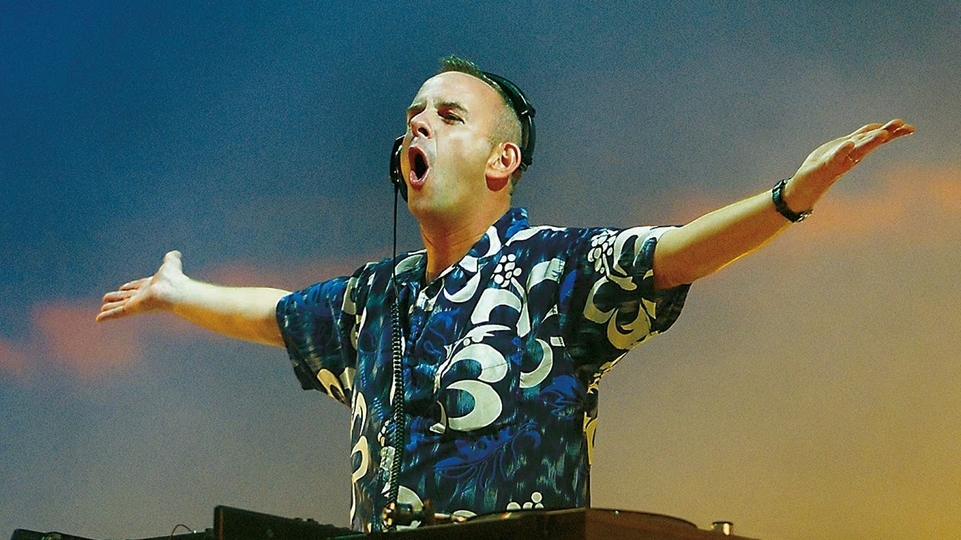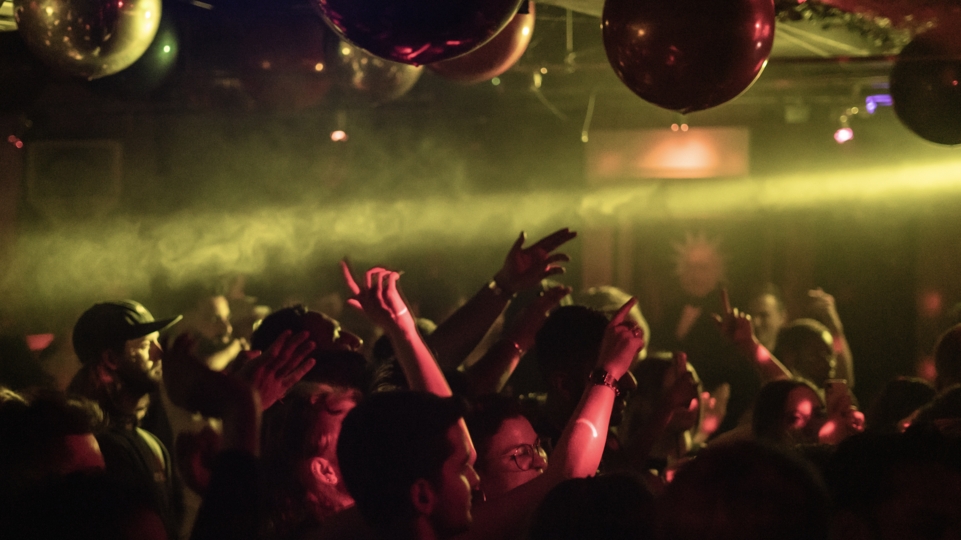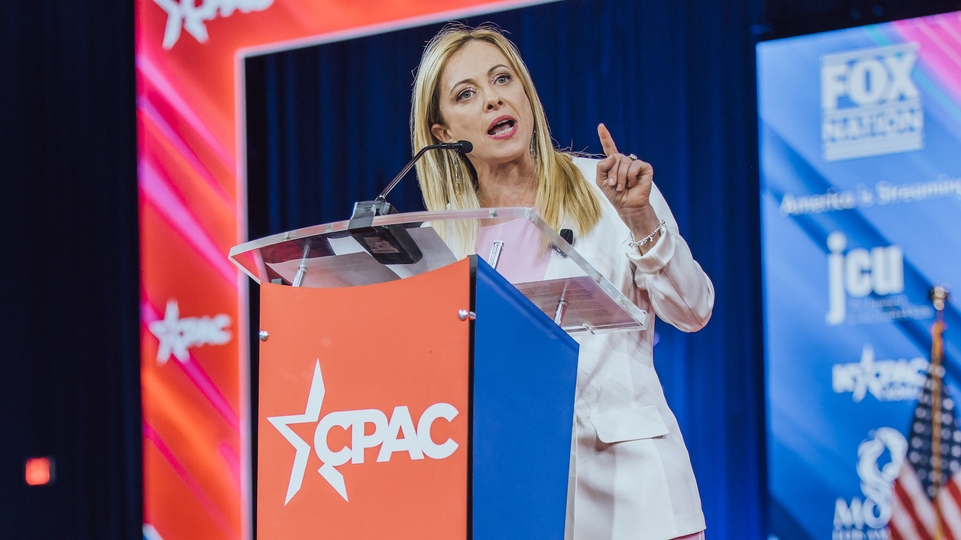
Exploring East Anglia's untold rave history
The dance music history of East Anglia is rich, multi-layered and messy — and little documented. Matt Anniss chats to some of the scene’s longstanding figureheads about the region’s airfield parties, seaside throwdowns and forgotten clubs, discovering a vital but rarely discussed stage in the UK’s rave evolution
It’s just gone midnight and the dancefloor at Mossy’s, a two-floor nightclub above the Harbour Inn in Lowestoft, is heaving with life. Andrew ‘Richie’ Riches, a legendary local DJ/producer best-known for his sparkling drum & bass records alongside Jay Hurren as JMJ & Richie, has just begun his set with a previously unheard rework of his good friend Mike ‘PFM’ Bolton’s early Good Looking Records classic ‘The Western Tune’ – a 1995 workout that helped to define the ‘liquid funk’ sound of LTJ Bukem’s celebrated imprint.
The crowd — a mix of misty-eyed rave veterans in their forties and fifties, 20-something lads and lasses in Hospital Records T-shirts and pie-eyed locals continuing the party started by today’s First Light Festival on England’s most easterly beach — responds rapturously. “He’s fucking brilliant,” exclaims 47-year-old Neil Saunders, who was once a regular at the parties and raves Riches played at across the region during the 1990s. “I had so many amazing nights back in the day. East Anglia was brilliant for rave — there was so much going on.”
Speak to anyone who was an active DJ, dancer or producer in the region during that period — and to a lesser extent, the 2000s — and more often than not they’ll say something similar. It’s also true, for while the history of dance music culture in the region is little known outside of East Anglia, it arguably rivals any of the big British cities whose stories have previously been told in books, documentaries and magazine articles. Given that East Anglia boasts few cities, has long been unfairly considered a ‘rural backwater’, and lacks the widespread soundsystem culture of the type found in places with historically higher levels of Caribbean immigration, the region’s long love affair with hardcore, jungle and drum & bass is remarkable.
As you’d expect, the history of rave culture in East Anglia is messy and complicated, with many overlapping storylines and interconnected clusters of activity in towns and cities across the region, from Peterborough, Cambridge and Kings Lynn in the West, to Ipswich in the South, and Great Yarmouth and Lowestoft to the East. What has always united the region, though, is a willingness for DJs and dancers to travel long distances to get their musical fix. Historically, there have also been levels of cooperation between DJs and promoters not always seen elsewhere in the country.
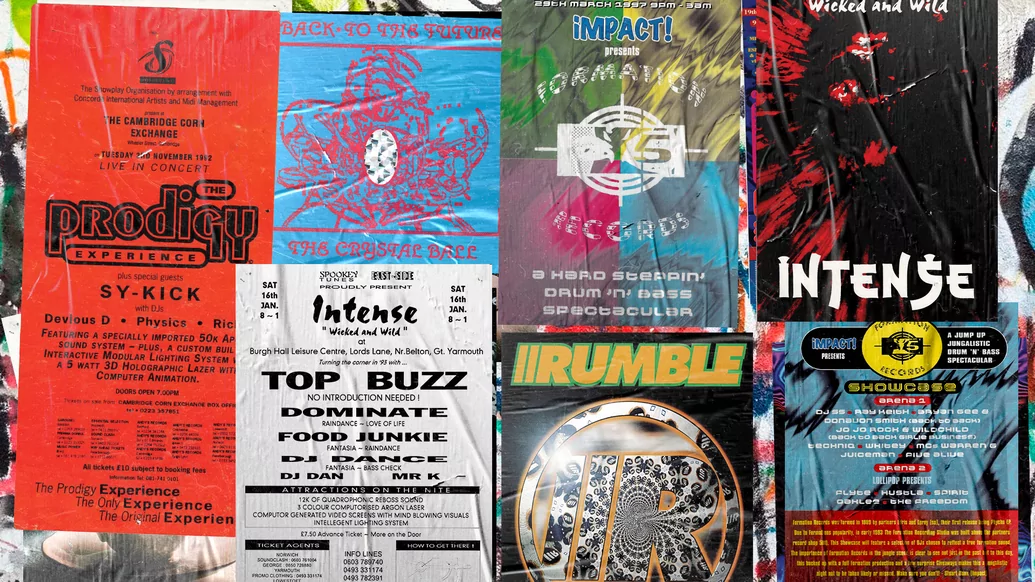
This aspect of the scene can arguably be traced back to the prior jazz-funk and soul scene, where DJs and promoters such as Cambridge’s Chris ‘Charlie’ Brown and Max Rees, and Richard Routledge, the man behind the popular Richard’s Parties events at Great Yarmouth seafront club Tiffany’s, regularly criss-crossed the region to play at all-dayers. Twice a year, the region’s ‘soulies’ were joined by their compatriots from London and the Home Counties at the Caister Soul Weekender, which was held throughout the decade at holiday camps just outside Great Yarmouth.
By 1987, these soul veterans were being joined behind the decks in their hometown clubs by a new generation of DJs who had grown up on electro, hip-hop and the emerging sound of acid house.“Me and Richie [Andrew Riches] had similar paths in the early days,” says Stuart Banks, then an aspiring soul and house DJ but later co-promoter of the legendary Eclipse rave events alongside his late brother David. “I used to hang around with Chris ‘Charlie’ Brown, and he gave me opportunities to play at his nights. It was the same for Richie with Richard Routledge.”
Richie was a pivotal figure in the development of dance music culture in Great Yarmouth throughout the late ’80s and early ’90s, and arguably East Anglia as a whole. A dedicated crate digger who regularly travelled down to London to find fresh records, his trademark blend of darker and more intense forms of dance music inspired those who came in his wake. “I thought all DJs played hard music, because that’s what we heard locally,” says Simon Webster, who released his first record as Simon Mark, ‘Say Aaah’, on Sheffield imprint Ozone Recordings in 1990. “Richie and the others that came through at the same time as me, like Jam Master Jay [Jay Hurren], DJ Hostyle and Mike Bolton, played proper acid house, druggy new beat records, Belgian techno and later breakbeat hardcore. It was only when Sasha came to play, and it was more piano-heavy and uplifting, that I realised that it wasn’t only harder music played in clubs.”
Riches, who honed his skills by mixing for eight hours a day during spells on the dole and later mentored East Anglia’s leading female DJ of the ’90s, JoJo Rock, concedes that he did gravitate towards heavier music: “I’m a small fella and haven’t got an aggressive bone in my body. Playing hard music was me showing my aggressive side.” As someone who regularly travelled throughout the East — and later, as a support DJ for both N’Joi and the Prodigy, further afield — Riches was able to spread his take on the emerging rave culture throughout the region.
But he wasn’t alone. By the early 1990s, there were significant outposts of activity in Peterborough, home to key DJ/producers Shades Of Rhythm, Lee Coombs and Nick Annies, as well as the popular Tekno Dream parties at the Attic; Cambridge, where the Eclipse all-nighters at the Corn Exchange drew thousands of dancers every month; Norwich, via the Intense and Sensateria parties; Kings Lynn, with Hyperbolic and Perception at the Speedway Stadium; and Great Yarmouth, which was home to promoter Alekkos Faccas and his hugely popular Dance Paradise events (by the mid 1990s, Faccas was throwing periodic ‘multi-venue’ raves for up to 8,000 people at a time). These events regularly drew in punters from across the region, including those who attended far smaller shindigs in towns such as Newmarket, Bury St Edmunds, St Ives, Huntingdon and — most surprisingly of all — sleepy North Norfolk coastal resort Cromer.
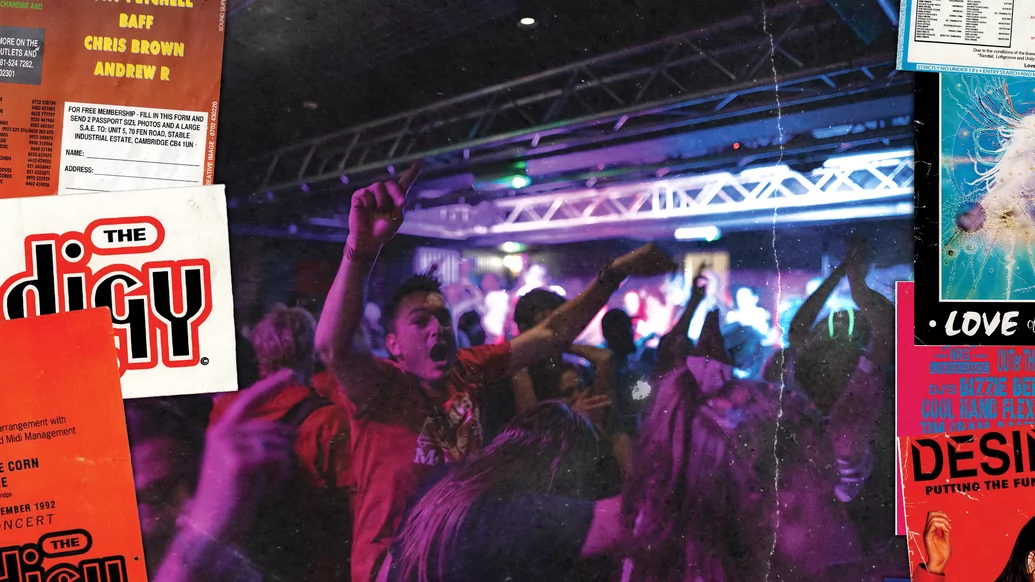
Expanding the scene further, and pivotal to the culture between 1989 and ’94, was a vibrant illegal rave scene inspired by the colossal M25 Orbital raves of 1988 and ’89. “We held our ‘illegal’ in September 1989, on a beach somewhere near Happisburgh,” remembers David James, who back then was a Norwich-based DJ who tended to play alongside another popular local selector, Paul Hale AKA PH1. “There were tons of illegal parties back then — lots of warehouses, old aircraft hangars and rural barns were used.”
Initially, events tended to be held on opposite sides of the region — think warehouses in Cambridge, Norfolk beaches and a former Bird’s Eye factory in Great Yarmouth — but by the spring of 1990, activity had moved to the area in and around Thetford Forest, a location slap bang in the centre of East Anglia, serviced by the M11/A11 London-to-Norwich trunk road. “There was one we did on the military training ground near RAF Mildenhall,” Dave Mitchell AKA DMX of Norfolk rave crew The Bees Knees explains. “The convoy was stopped by soldiers, who were on night exercises. We told them we were going to do a rave in this military bunker. They let us go and later some of the soldiers came and joined us at the rave!”
The Bees Knees crew was one of several key rave promoters who helped make East Anglia a hotbed of illegal rave activity during the period. There was also the Banks brothers’ Groove II organisation, Properstuff, House Party, A.D.I, Mr Pitts, Kite High and – right at the start of the story – the Tonka free party crew, whose resident DJs included Harvey and Tom Bullock. In fact, the level of activity within the region was so high that a dedicated Pay Party Unit was formed by Cambridgeshire Police. “There was something on almost every week, put on by me and my brother or the other rave promoters,” Stuart Banks says proudly. “We just took it in turns. Eventually the police got their act together and started blocking off roads, but we got away with loads. I’d say we got away with it most of the time.”
By the mid 1990s, and with the era of illegal raves coming to an end, the East Anglian scene was starting to splinter. “Hardcore moved away from the breakbeats and started to get happy, and jungle and drum & bass were coming in,” says Matty South, originally a hardcore DJ under the alias DJ Perfection but later a successful promoter and now a big name within drum & bass with his productions as T>I. “That happy hardcore sound was big in Kings Lynn and the Fens, but by then I was more interested in jungle and drum & bass.”
The formative years of drum & bass culture in East Anglia, which ran from 1994 until the early 2000s, were a fertile period. “The biggest events back then, and ever since, were Warning at the Junction in Cambridge, and Rumble in Norwich,” says Cambridge-based Rob Spiers AKA Trauma DBC. “Warning sometimes did the second room at the Junction too when there were house or retro nights on, so we’d be there almost every weekend. It was where everyone in Cambridge went, so it was a social thing — you could hear the music but also see your friends who weren’t into d&b.”
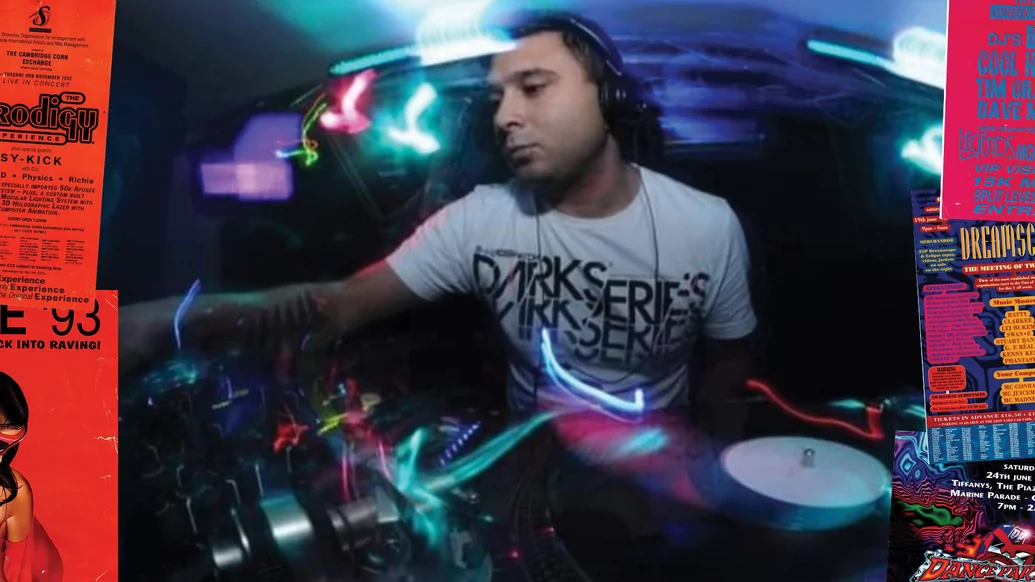
Perhaps more significantly, the volume of records being made in the region during this period was surprisingly high, thanks to clusters of activity in Ipswich and on the strip of the East Coast that boasts Lowestoft and Great Yarmouth. The latter location was home to a group of friends with links to both Good Looking Records and Moving Shadow. Alex Banks and Danny Demiere had already tasted success earlier in the decade as core act Hyper-On Experience; when they decided to start working on different projects, the floodgates opened.
Banks joined forces with Jay Hurren as E-Z Rollers, Demiere delivered solo material as Flytronix, and Hurren also worked with Riches as JMJ & Richie. For a period, they all shared a studio, alongside friends (and fellow producers) Tekniq. Then there was Mike Bolton and his PFM project, which was separate but still part of the same sonic movement. Their collective sound was slick, soulful and melodious, inspired by a mixture of their soul roots, a love of jazz-funk and the records championed by their favourite DJ of the time, LTJ Bukem. “Danny [Bukem] used to come up here a lot to play,” Tekniq’s DJ Hostyle explains. “It got to a point where he’d drive up from London when he wasn’t playing, with his DAT machines, to get tracks straight from the studio.”
Such was the uniqueness of the crew’s collective sound that they soon set their sights on doing a joint release. This was 1996’s ‘Storm From The East’ compilation on Moving Shadow, which was followed by a sequel a year later. While ignored by some of the d&b community in London, both albums are now considered classics and have been cited by Pendulum as a major influence.
Down the road in Ipswich, the most multicultural town in the region (reggae soundsystem culture had been present in some form for decades), another group of DJs and producers was happily making d&b their own. It arguably emerged from two record stores, Red Eye and Essential Selection, and was initially spearheaded by Paul Arnold’s Certificate 18 label. “Although I lived in London at the time, there was always something worth going back to Ipswich for in that period,” says Tom Withers aka Klute, who joined Certificate 18 in 1995. “There was Photek at his prime, Digital, DJ Spirit and Rob Solomon, who is an unsung hero — he ran Essential Selection, but also produced or co-produced a lot of early Certificate 18 singles. I had my studio in my parents’ house in Ipswich for a while, and I’d make solo tracks and collaborate with Tom Ison from Red Eye and Duncan [DJ Spirit].”
While Ipswich “wasn’t really about clubs” — though the Hollywood and I.C.A clubs hosted some significant nights during the ’90s, most notably regular d&b party Impact — what was happening in the town tapped into the wider d&b movement that was sweeping the region. Norwich and Cambridge hosted countless club events for junglists, while the former city was also home to pirate radio stations Flight FM and Style FM.
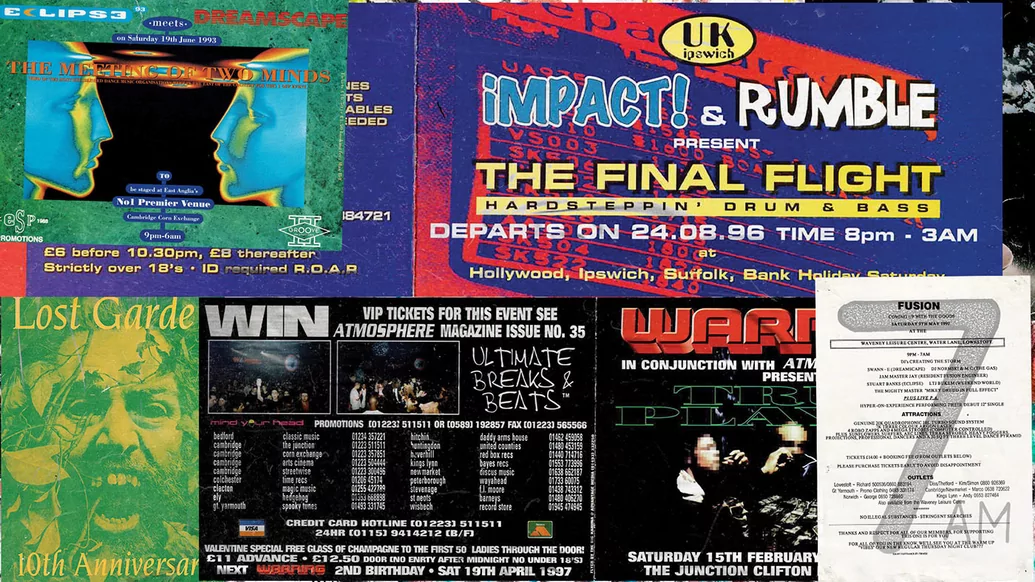
It took a while for Cambridge to produce a small crew to rival those that had existed during the late ’90s in Ipswich and on the East Coast. Eventually it arrived in the summer of 2004, via a now legendary double-pack entitled ‘The Future Sound Of Cambridge’. It was the work of ‘the Cambridge Four’ — Dan Gresham (Nu:Tone), his brother Matt (Logistix), George Levings (Commix) and Guy Brewer (Shifted) — four middle-class friends whose musical inspirations were far more soulful than the jump-up-driven sounds previously associated with the Cambridge d&b scene. “We were mates and used to hang out all the time, play records and sit around in a bedroom talking shit and mixing,” Dan Gresham remembers. “Basically, for the first 10 years of our respective production careers, we would play each other everything. We all worked separately and collaborated on stuff here and there, but we all shared ideas and encouraged each other.”
All four have gone on to become genuine heavyweights of the scene — elder statesmen who have cemented Cambridge’s place within drum & bass folklore. Today, d&b remains a key part of dance music culture in East Anglia, with a mixture of veterans and younger DJs/producers making serious moves (think Inja, Bladerunner and T>I, all of whom make the kind of energetic, ’98-influenced ‘rollers’ that are hugely popular right now, and the pan-bass music fusionist Sully). “In the social media era, it’s not really about where someone is from, but I’m still surprised when I find that somebody is based in East Anglia,” Tom Withers says. “It happens quite a lot — I found out the other day that Conrad Subs is from here. Villem, who is prolific, lives in Ipswich too. There’s no scene as such now, but there are producers.”
As Withers points out, East Anglia is currently going through something of a fallow period club-wise, certainly compared to its ’90s and 2000s heyday. There are bright sparks, though — most notably occasional big events at Junction in Cambridge, and Epic Studios in Norwich. One of the most significant current clubs is the pleasingly eclectic Gonzo’s Two Room in Norwich, where you’re just as likely to see cutting-edge house DJs as bass music behemoths and jungle legends. “In Norwich and Norfolk, the arts and band scene get a lot of attention, but I can’t really think of when electronic music was last represented here,” Gonzo’s promoter Levi de Belgeonne told DJ Mag last month. “Our ethos is to represent good dance music in Norwich. It hasn’t been here for so long and people are paying more attention again now.”
If dance music culture in East Anglia is once again on the rise, this can only be a good thing — after all, the region’s dance music history (only a small amount of which has been mentioned in this article) is rich and vibrant. “For years, East Anglia had loads going on, but we were never perceived as being trendy by the London and Essex lot,” Stuart Banks says. “People think nothing happens in East Anglia and we’re just a bunch of farmers.”


